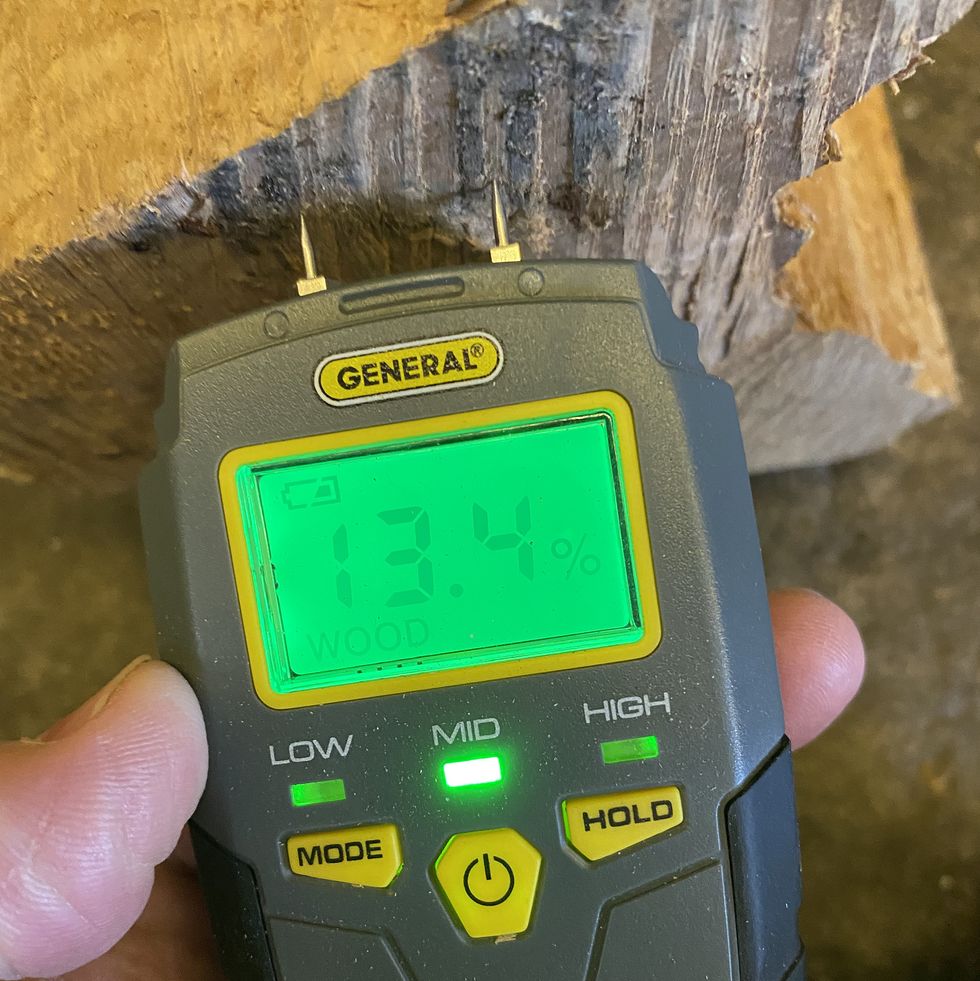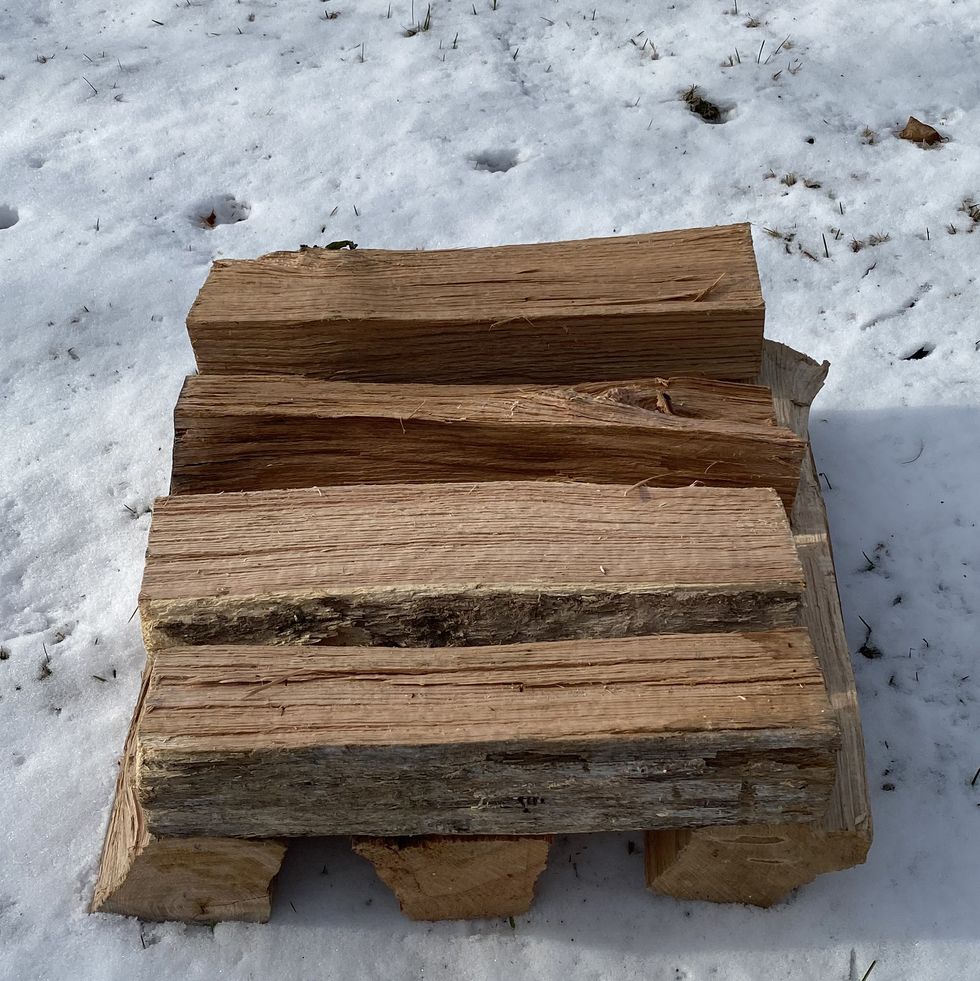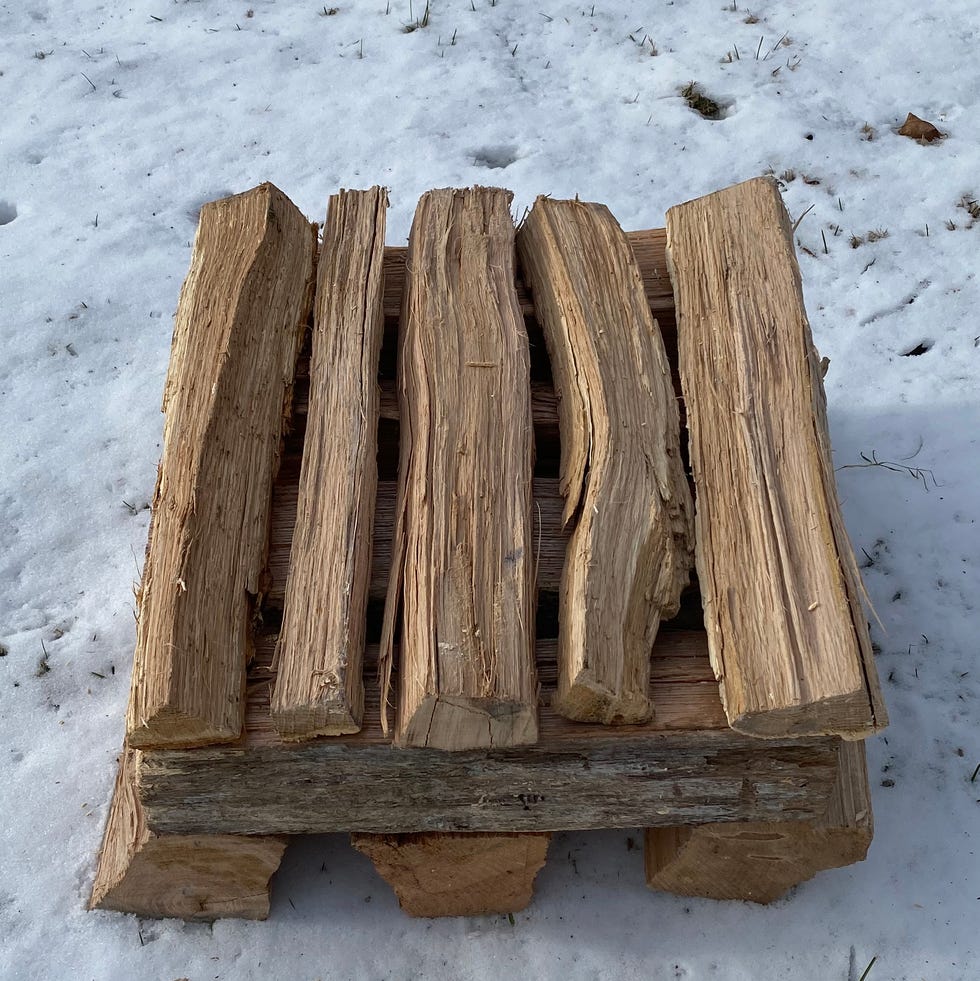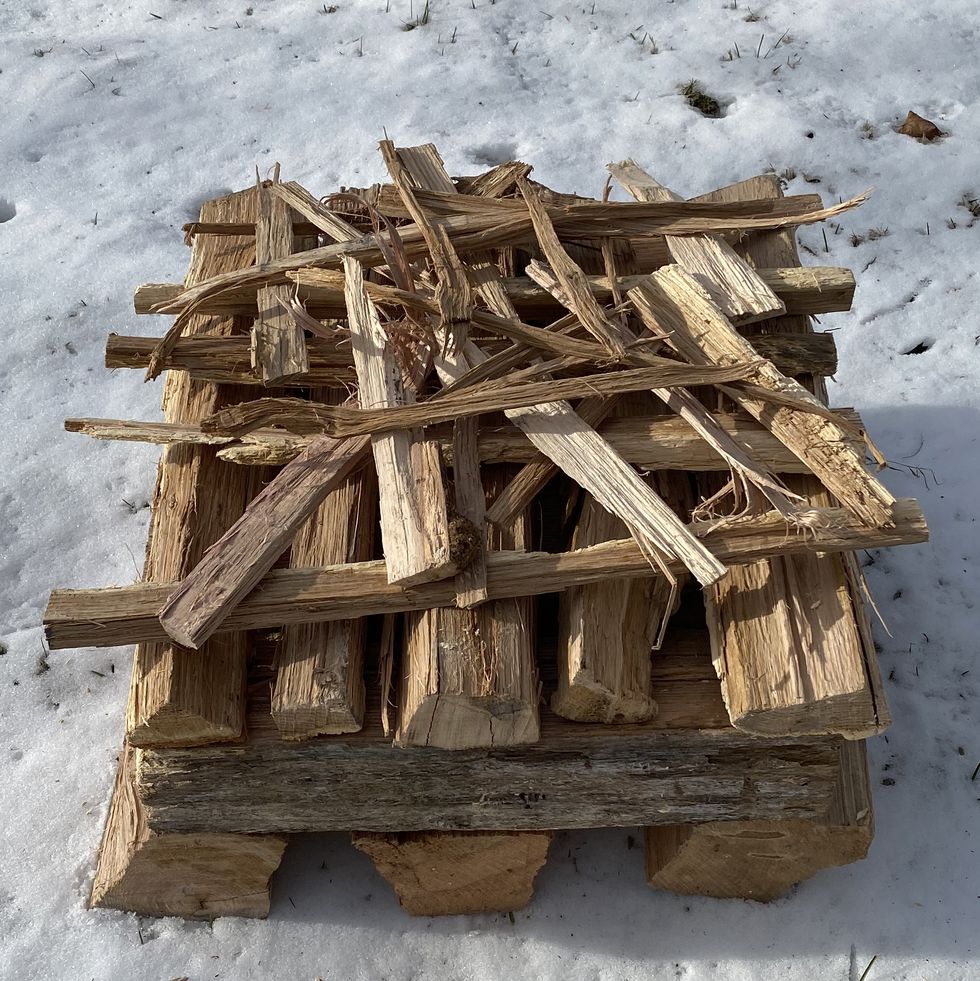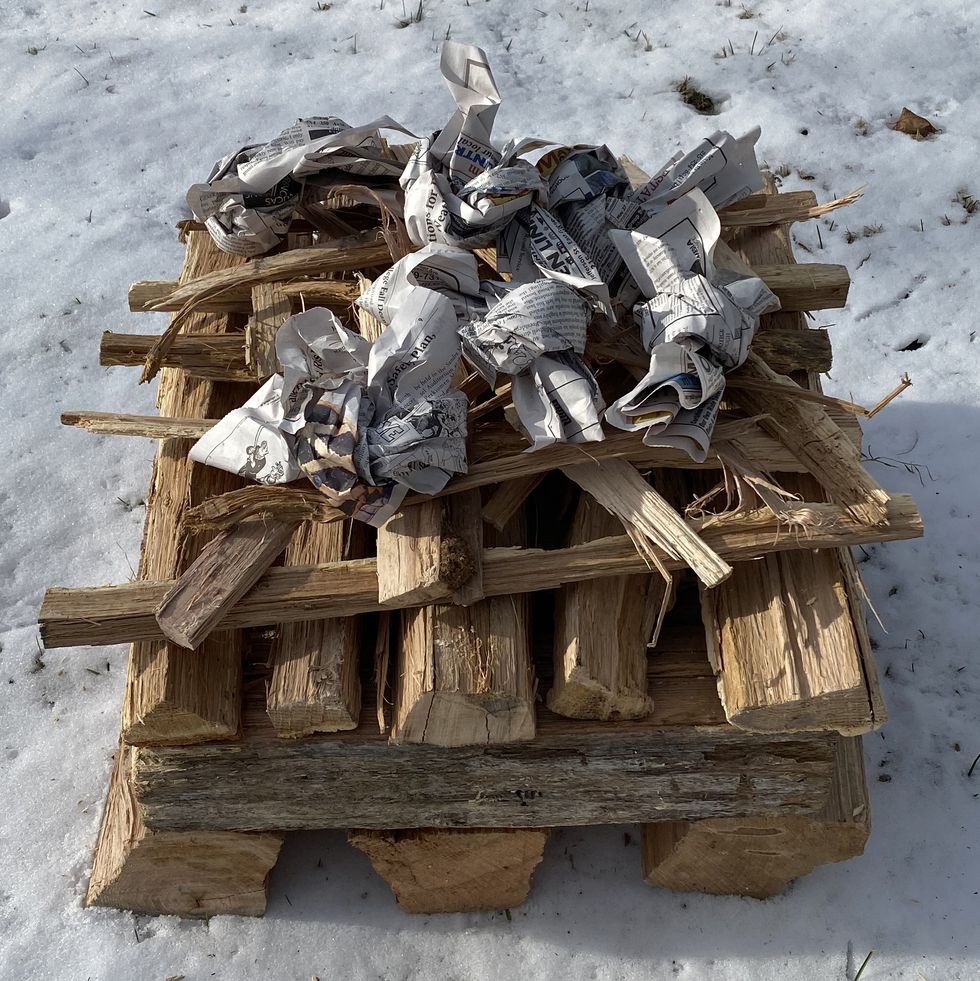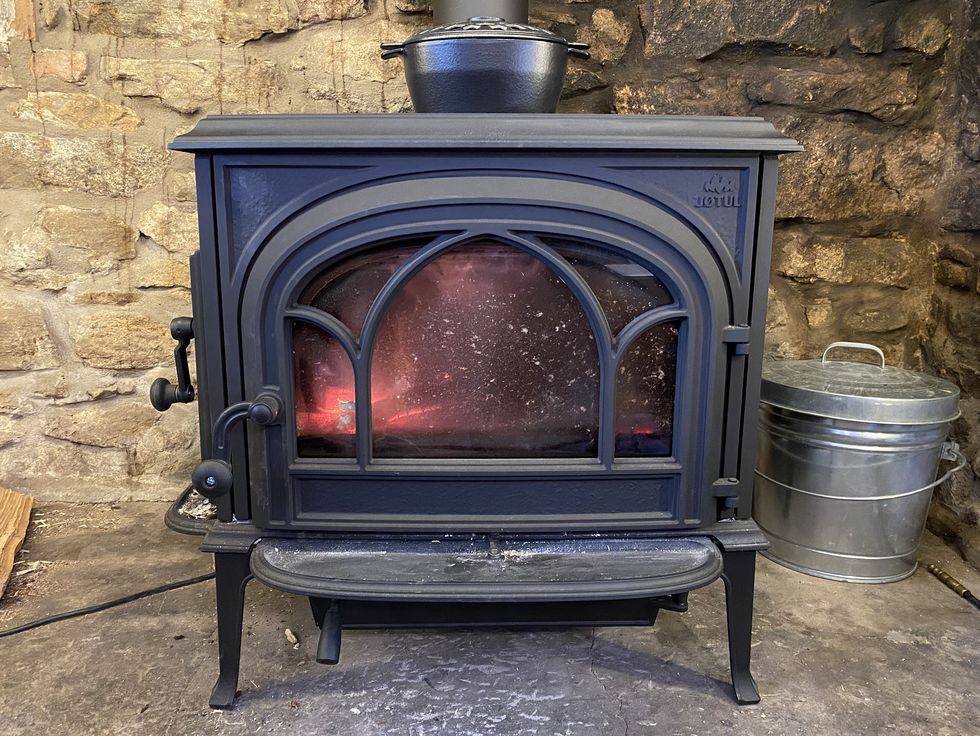The Takeaway: This fire-starting technique will take some patience to master. With the smaller kindling one top, it has to burn down, rather than up. The size of the kindling, as well as how you layer it, is critical to making this method work. Proponents of this style of fire tout its advantages of longer burn times and less of a possibility of smoke escaping a stove or fireplace. While these are true, there are also disadvantages, as we found in our journey to learn the ins and outs of the top-down fire.
How To Start a Top-Down Fire
Also referred to as an upside-down fire, the top-down is arranged with the largest logs on the bottom and the smallest bits of kindling on top. As the pieces burn, they fall onto the next largest pieces below, until the fire reaches the bottom. Done right, the fire will start and slowly work its way through all the fuel in the stack. Done wrong, it will have you periodically adding kindling of various sizes, hoping to foster a continuous burn. But don’t worry—I’ve been there, it’s part of the learning process.
Anytime you’re burning wood in a fireplace or stove, you’ll need to start with suitably dry firewood. Ideally, it will have a moisture content below 15 percent. (If you’re unsure, you can find out the help of a digital moisture meter.)
Depending on the length of logs and the size of your firebox, you’ll need three or four large logs, 5 to 6 inches in diameter. Lay these down parallel to each other, with small gaps between them, to make your first layer.
The next layer of logs should be laid perpendicular to the first, and they should be slightly smaller—about 3 to 4 inches in diameter. Place them with gaps of around 3⁄4 inch between them.
A third layer of yet smaller logs, 1 to 2 inches in diameter is next. Lay these perpendicular to those on the previous layer. Gaps between them can be 3⁄4 to a little more than 1 inch.
Top the stack with a mix of medium to small pieces of kindling, laid roughly perpendicular to the previous layer.
The last step is to add newspaper on top—everyone has a preference for how they do this. Some recommend twisting sheets of newspaper into a rope and tying it in a knot. Others prefer to crumple up their newspaper in loose balls. In either case, five to six balls or knots should work.
My preference for newspaper, though, is to rip narrows strips of an entire folded paper. The paper curls and fans out, leaving lots of air gaps that facilitate an even spread of flames across the kindling. Six or seven strips is a good number. With the newspaper on top, all you have left to do is light the paper.
If you’ve got the layers right, the fire will slowly burn down to the large logs on the bottom. So, that's your top down fire—it works well for shorter fires used for maybe three or four hours. If you want to stoke the fire and add more wood to continue using the fire, it becomes a traditional bottom-up fire at this point.
Advantages of a Top-Down Fire
After spending some time with top-down fire starting, I can confirm two of the things people tout as its advantages. Longer burn times: Yes, all things being equal in my experience, a top-down fire lasts longer. Less smoke: This is a trickier one, as I wasn’t sure what people meant by less smoke. I could not discern that the fire produced less smoke, but it allowed less smoke to escape my wood stove and into my home. This was most notable when the flu was cold, as I was starting the fire and establishing a draft—the or rising, current of air that pulls smoke up the chimney.
In some wood stoves and fireplaces, it takes a fair amount of heat directed toward the flu to get the smoke moving effectively up the chimney. With a top-down fire, the initial flames are at the top of the firebox. So the heat and smoke are less likely to make their way into your home and more likely to flow straight up the flu. If you’ve had issues with a smoky stove or fireplace, starting a top-down fire might help solve your issue.
Disadvantages of a Top-Down Fire
However, that first advantage can also be a disadvantage. Longer burn times may make your logs last longer, but they won’t burn as hot. If you just want a fire to provide some heat and ambiance, that’s great. However, if the fire is part of your house-heating strategy, it might not be so great. Wood, being fuel, has a finite amount of energy potential per pound, usually measured in British Thermal Units (BTUs). Oak firewood, for example, has around 7,000 BTUs per pound. If that burns over an hour, it will give off heat at a higher temperature than it will if burned over two hours. So you have to strike a balance between heating goals and wood consumption.
Of course, there are other variables. There are vast differences between fireplaces and wood stoves when it comes to efficiency. Catalytic stoves can slow down the burn to wring the most possible heat out of your firewood, and some of these models are among the most efficient wood-heating appliances available. In this type of stove, the exhaust gasses heat up the catalytic element and creates a secondary burn. Any unburnt fuel escaping as a gas gets combusted in this process. However, the catalytic element has to reach a certain temperature to do this, and a lower, slower, top-down fire may delay this combustion from happening.
The second disadvantage I experienced with the top-down fire was sizing the logs. My wood stove has a rectangular fire box, so all my firewood is cut the appropriate length to fit, long-ways, at 18-20 inches. In order to build a traditional top-down fire, I needed to cut some of my logs in half to be able to stack them perpendicular every other layer. This took more time that could have been spent heating the house. Also, this method requires a greater quantity and variety of smaller logs, which I needed to split each time I built a fire. And, even though I keep a maul by the wood pile for those occasions I have a log too big for the stove, doing it every time I bring wood in is inefficient.
The Verdict
If you’ve got a fireplace or a big stove, issues with establishing a draft, or just enjoy having a fire for some additional warmth and atmosphere, the top-down fire is a good option. But if you’re concerned about heating your home with wood, it’s not the most efficient way to do it.
Brad Ford has spent most of his life using tools to fix, build, or make things. Growing up he worked on a farm, where he learned to weld, repair, and paint equipment. From the farm he went to work at a classic car dealer, repairing and servicing Rolls Royces, Bentleys, and Jaguars. Today, when he's not testing tools or writing for Popular Mechanics, he's busy keeping up with the projects at his old farmhouse in eastern Pennsylvania.

